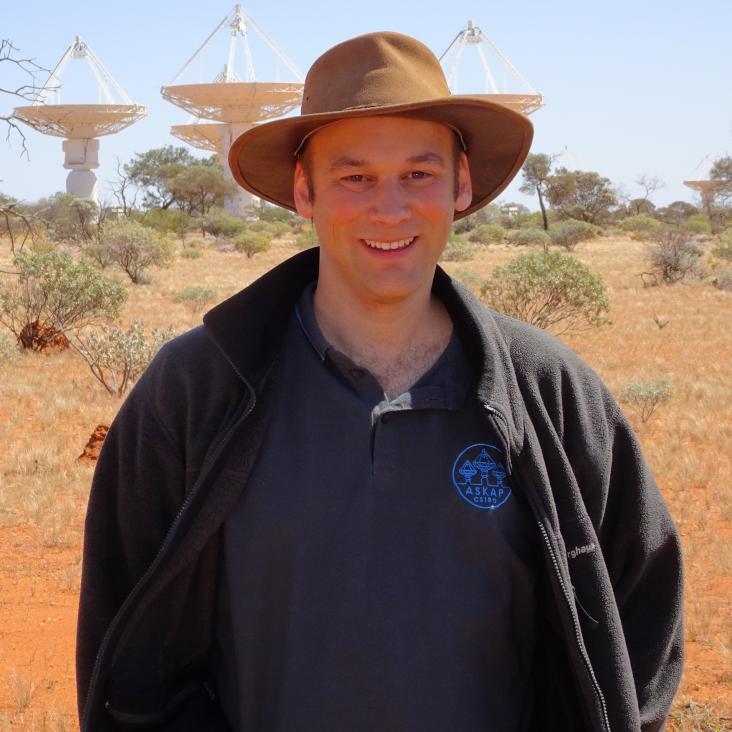The dispersion-brightness relation for fast radio bursts from a wide-field survey
Nature Springer Nature 562 (2018) 386-390
Abstract:
Despite considerable efforts over the past decade, only 34 fast radio bursts-intense bursts of radio emission from beyond our Galaxy-have been reported1,2. Attempts to understand the population as a whole have been hindered by the highly heterogeneous nature of the searches, which have been conducted with telescopes of different sensitivities, at a range of radio frequencies, and in environments corrupted by different levels of radio-frequency interference from human activity. Searches have been further complicated by uncertain burst positions and brightnesses-a consequence of the transient nature of the sources and the poor angular resolution of the detecting instruments. The discovery of repeating bursts from one source3, and its subsequent localization4 to a dwarf galaxy at a distance of 3.7 billion light years, confirmed that the population of fast radio bursts is located at cosmological distances. However, the nature of the emission remains elusive. Here we report a well controlled, wide-field radio survey for these bursts. We found 20, none of which repeated during follow-up observations between 185-1,097 hours after the initial detections. The sample includes both the nearest and the most energetic bursts detected so far. The survey demonstrates that there is a relationship between burst dispersion and brightness and that the high-fluence bursts are the nearby analogues of the more distant events found in higher-sensitivity, narrower-field surveys5.A pilot survey for transients and variables with the Australian Square Kilometre Array Pathfinder
MONTHLY NOTICES OF THE ROYAL ASTRONOMICAL SOCIETY 478:2 (2018) 1784-1794
Giant galaxy growing from recycled gas: ALMA maps the circumgalactic molecular medium of the Spiderweb in [C i]
Monthly Notices of the Royal Astronomical Society: Letters Oxford University Press (OUP) 477:1 (2018) L60-L65
An ALMA view of star formation efficiency suppression in early-type galaxies after gas-rich minor mergers
Monthly Notices of the Royal Astronomical Society Oxford University Press (OUP) 476:1 (2018) 122-132
A radio counterpart to a neutron star merger
Science American Association for the Advancement of Science 358:6370 (2017) 1579-1583


